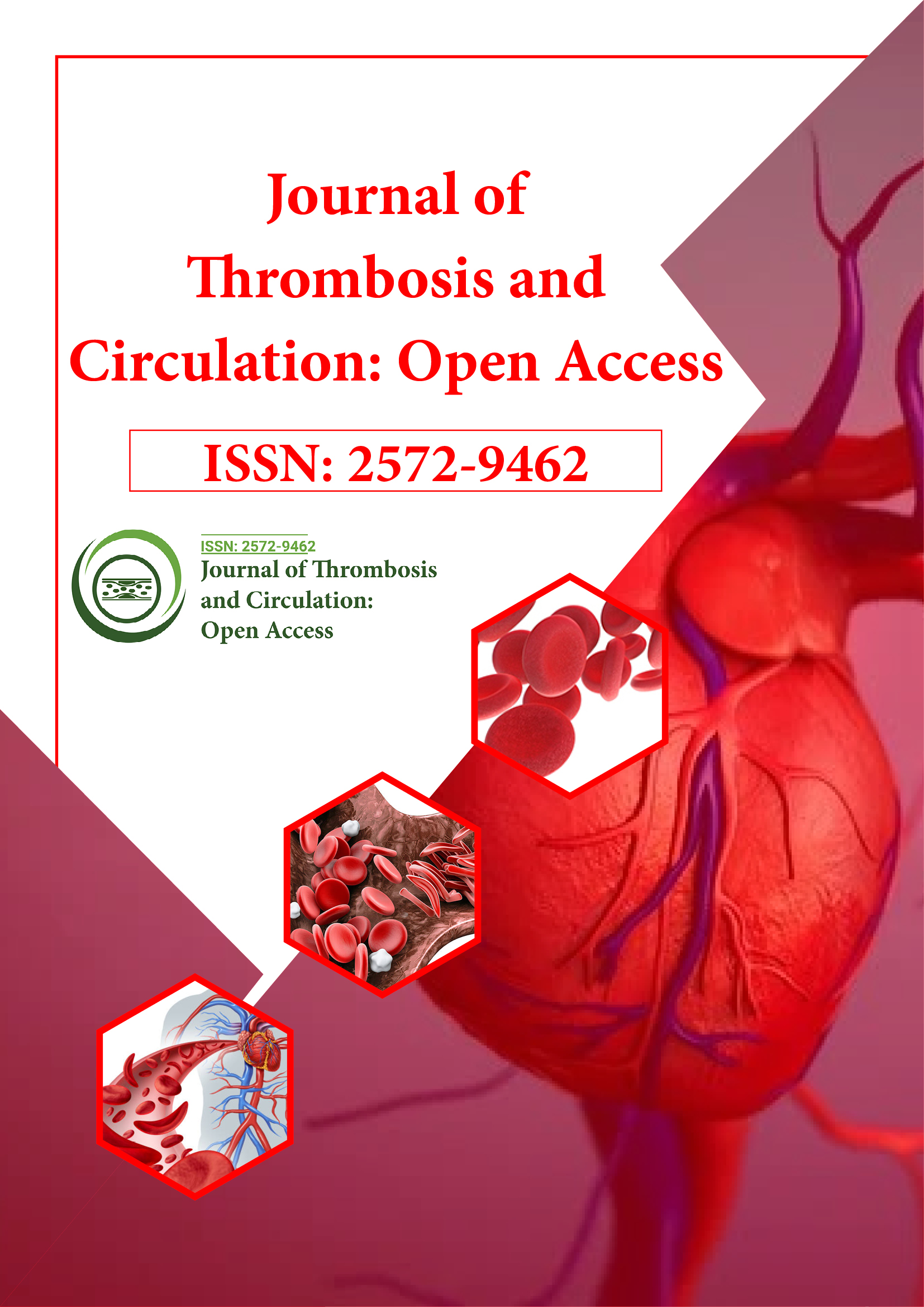Indexed In
- RefSeek
- Hamdard University
- EBSCO A-Z
- Publons
- Google Scholar
Useful Links
Share This Page
Journal Flyer

Open Access Journals
- Agri and Aquaculture
- Biochemistry
- Bioinformatics & Systems Biology
- Business & Management
- Chemistry
- Clinical Sciences
- Engineering
- Food & Nutrition
- General Science
- Genetics & Molecular Biology
- Immunology & Microbiology
- Medical Sciences
- Neuroscience & Psychology
- Nursing & Health Care
- Pharmaceutical Sciences
Opinion - (2025) Volume 11, Issue 1
Illustrate the Pathogenesis and Consequences in Atherosclerosis
Lu Wang*Received: 21-Mar-2024, Manuscript No. JTCOA-24-25202; Editor assigned: 23-Mar-2024, Pre QC No. JTCOA-24-25202 (PQ); Reviewed: 07-Apr-2024, QC No. JTCOA-24-25202; Revised: 24-Feb-2025, Manuscript No. JTCOA-24-25202 (R); Published: 03-Mar-2025, DOI: 10.4172/2572-9462.25.11.295
Introduction
Atherosclerosis, a term derived from the Greek words "athero" meaning gruel or paste and "sclerosis" meaning hardening, is a complex vascular disease characterized by the accumulation of plaque within the walls of arteries. This condition silently progresses over decades, often without noticeable symptoms until it leads to severe complications such as heart attack, stroke, or peripheral artery disease. Understanding the mechanisms and risk factors of atherosclerosis is paramount in combating this widespread yet preventable condition.Description
The hallmark of atherosclerosis is the formation of atherosclerotic plaques, which consist of cholesterol, fatty substances, cellular waste, calcium, and fibrin. Initially, the inner lining of arteries, called the endothelium, sustains damage due to various factors including high blood pressure, smoking, high cholesterol, diabetes, and inflammation. In response to this injury, white blood cells migrate to the damaged site, where they engulf Low-Density Lipoprotein (LDL) cholesterol particles, forming foam cells. Over time, these foam cells accumulate within the arterial wall, leading to the formation of fatty streaks, the earliest visible sign of atherosclerosis.
As the disease progresses, smooth muscle cells proliferate and migrate to the site of injury, further contributing to plaque formation. The growing plaque gradually narrows the arterial lumen, impeding blood flow to vital organs and tissues. Moreover, the plaques can become unstable and prone to rupture, triggering the formation of blood clots that can obstruct blood flow completely, resulting in a heart attack or stroke.
Numerous risk factors predispose individuals to atherosclerosis. Lifestyle factors such as poor diet, physical inactivity, and smoking play a significant role. Diets high in saturated fats, Trans fats, and cholesterol promote the accumulation of plaque in the arteries, while physical inactivity contributes to obesity and increases the risk of developing hypertension and diabetes, all of which are key risk factors for atherosclerosis. Additionally, genetic factors can influence an individual's susceptibility to the disease, as can age and certain medical conditions such as hypertension, diabetes, and chronic kidney disease.
Preventing and managing atherosclerosis involves addressing modifiable risk factors through lifestyle modifications and medications. Adopting a heart-healthy diet rich in fruits, vegetables, whole grains, and lean proteins can help lower cholesterol levels and reduce the risk of plaque formation. Regular physical activity is also essential for maintaining cardiovascular health and managing weight. Smoking cessation is crucial, as smoking not only damages the endothelium but also promotes inflammation and accelerates the progression of atherosclerosis.
In addition to lifestyle interventions, medications may be prescribed to control risk factors associated with atherosclerosis. Statins are commonly prescribed to lower cholesterol levels, while anti-hypertensive medications help manage high blood pressure. Antiplatelet medications such as aspirin are often recommended to reduce the risk of blood clots and complications such as heart attack and stroke.
Conclusion
Atherosclerosis is a chronic and progressive vascular disease characterized by the accumulation of plaque within the arteries. While it may develop silently over many years, the consequences of atherosclerosis can be devastating, leading to life-threatening complications such as heart attack and stroke. Understanding the mechanisms and risk factors of atherosclerosis is essential for implementing preventive measures and early interventions to mitigate its impact on public health. By adopting a heart-healthy lifestyle and effectively managing risk factors, individuals can reduce their risk of developing atherosclerosis and its associated complications, ultimately leading to better cardiovascular outcomes and improved quality of life.Citation: Wang L (2025) Illustrate the Pathogenesis and Consequences in Atherosclerosis. J Thrombo Cir. 11:295.
Copyright: © 2025 Wang L. This is an open-access article distributed under the terms of the Creative Commons Attribution License, which permits unrestricted use, distribution and reproduction in any medium, provided the original author and source are credited.
